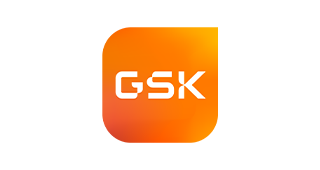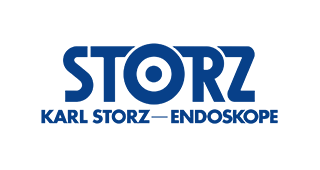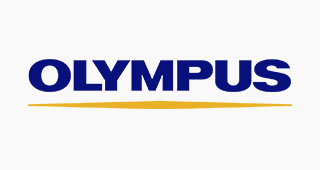SIU-WJU Article of the Month – April 2016
The Role for Mesh in Vaginal Surgery for POP: New Modifications to an Existing Technique
SIU Academy®. DeLong J. 04/04/16; 131527
Topic: TreatmentThe Role for Mesh in Vaginal Surgery for POP: New Modifications to an Existing Technique
CLICK HERE TO LOGIN
EXCLUSIVE CONTENT
EXCLUSIVE CONTENT
Access to Exclusive content is restricted to SIU members only.
Click here to become a member
Abstract
Discussion Forum (0)
Rate & Comment (0)
Objective
To evaluate the efficacy and safety of skeletonized mesh implants for advanced pelvic organ prolapse (POP).
Methods
Women with advances POP underwent repair of stage III or greater anterior or posterior and apical compartment prolapse using skeletonized mesh implants (Seratom PA MR MN® system—SERAG-WIESSNER, Naila, Germany). Anatomical outcomes were assessed using pelvic organ prolapse quantification staging and functional outcomes were self-reported by the patients at 6 weeks, 6 and 12 months. Anatomical and functional cure rates, post-operative pain and dyspareunia as well as intra and post-operative complications were reported. Success was defined as a composite of no bulge symptoms and no prolapse beyond the hymenal ring.
Results
At 12 months, data were available for 103 of the 105 patients originally recruited. Intra-operative complications included 2 (2 %) cases of cystotomy that were corrected vaginally. The immediate post-operative complications included 1 patient (1 %) with UTI, 4 (3.9 %) cases of self-resolved hematomas, and 6 (5.8 %) cases of bladder outlet obstruction. At 12 months, a high success rate and low complication rate was noted. Recurrence of prolapse was reported by 7 (6.6 %) patients. However, only 4 (3.8 %) underwent a repeat procedure. Two patient developed de novo SUI, and 6 (5.7 %) developed dyspareunia. No cases of mesh erosion/extrusion were noted.
Conclusion
The present study showed excellent anatomical and quality of life results in patients with advanced POP treated with a skeletonized and reduced mesh system. No mesh exposure was recorded within the first year after surgery.
Keywords
Pelvic organ prolapse - Mesh augmentation - Skeletonized mesh - Sacrospinous ligament fixation
To evaluate the efficacy and safety of skeletonized mesh implants for advanced pelvic organ prolapse (POP).
Methods
Women with advances POP underwent repair of stage III or greater anterior or posterior and apical compartment prolapse using skeletonized mesh implants (Seratom PA MR MN® system—SERAG-WIESSNER, Naila, Germany). Anatomical outcomes were assessed using pelvic organ prolapse quantification staging and functional outcomes were self-reported by the patients at 6 weeks, 6 and 12 months. Anatomical and functional cure rates, post-operative pain and dyspareunia as well as intra and post-operative complications were reported. Success was defined as a composite of no bulge symptoms and no prolapse beyond the hymenal ring.
Results
At 12 months, data were available for 103 of the 105 patients originally recruited. Intra-operative complications included 2 (2 %) cases of cystotomy that were corrected vaginally. The immediate post-operative complications included 1 patient (1 %) with UTI, 4 (3.9 %) cases of self-resolved hematomas, and 6 (5.8 %) cases of bladder outlet obstruction. At 12 months, a high success rate and low complication rate was noted. Recurrence of prolapse was reported by 7 (6.6 %) patients. However, only 4 (3.8 %) underwent a repeat procedure. Two patient developed de novo SUI, and 6 (5.7 %) developed dyspareunia. No cases of mesh erosion/extrusion were noted.
Conclusion
The present study showed excellent anatomical and quality of life results in patients with advanced POP treated with a skeletonized and reduced mesh system. No mesh exposure was recorded within the first year after surgery.
Keywords
Pelvic organ prolapse - Mesh augmentation - Skeletonized mesh - Sacrospinous ligament fixation
Objective
To evaluate the efficacy and safety of skeletonized mesh implants for advanced pelvic organ prolapse (POP).
Methods
Women with advances POP underwent repair of stage III or greater anterior or posterior and apical compartment prolapse using skeletonized mesh implants (Seratom PA MR MN® system—SERAG-WIESSNER, Naila, Germany). Anatomical outcomes were assessed using pelvic organ prolapse quantification staging and functional outcomes were self-reported by the patients at 6 weeks, 6 and 12 months. Anatomical and functional cure rates, post-operative pain and dyspareunia as well as intra and post-operative complications were reported. Success was defined as a composite of no bulge symptoms and no prolapse beyond the hymenal ring.
Results
At 12 months, data were available for 103 of the 105 patients originally recruited. Intra-operative complications included 2 (2 %) cases of cystotomy that were corrected vaginally. The immediate post-operative complications included 1 patient (1 %) with UTI, 4 (3.9 %) cases of self-resolved hematomas, and 6 (5.8 %) cases of bladder outlet obstruction. At 12 months, a high success rate and low complication rate was noted. Recurrence of prolapse was reported by 7 (6.6 %) patients. However, only 4 (3.8 %) underwent a repeat procedure. Two patient developed de novo SUI, and 6 (5.7 %) developed dyspareunia. No cases of mesh erosion/extrusion were noted.
Conclusion
The present study showed excellent anatomical and quality of life results in patients with advanced POP treated with a skeletonized and reduced mesh system. No mesh exposure was recorded within the first year after surgery.
Keywords
Pelvic organ prolapse - Mesh augmentation - Skeletonized mesh - Sacrospinous ligament fixation
To evaluate the efficacy and safety of skeletonized mesh implants for advanced pelvic organ prolapse (POP).
Methods
Women with advances POP underwent repair of stage III or greater anterior or posterior and apical compartment prolapse using skeletonized mesh implants (Seratom PA MR MN® system—SERAG-WIESSNER, Naila, Germany). Anatomical outcomes were assessed using pelvic organ prolapse quantification staging and functional outcomes were self-reported by the patients at 6 weeks, 6 and 12 months. Anatomical and functional cure rates, post-operative pain and dyspareunia as well as intra and post-operative complications were reported. Success was defined as a composite of no bulge symptoms and no prolapse beyond the hymenal ring.
Results
At 12 months, data were available for 103 of the 105 patients originally recruited. Intra-operative complications included 2 (2 %) cases of cystotomy that were corrected vaginally. The immediate post-operative complications included 1 patient (1 %) with UTI, 4 (3.9 %) cases of self-resolved hematomas, and 6 (5.8 %) cases of bladder outlet obstruction. At 12 months, a high success rate and low complication rate was noted. Recurrence of prolapse was reported by 7 (6.6 %) patients. However, only 4 (3.8 %) underwent a repeat procedure. Two patient developed de novo SUI, and 6 (5.7 %) developed dyspareunia. No cases of mesh erosion/extrusion were noted.
Conclusion
The present study showed excellent anatomical and quality of life results in patients with advanced POP treated with a skeletonized and reduced mesh system. No mesh exposure was recorded within the first year after surgery.
Keywords
Pelvic organ prolapse - Mesh augmentation - Skeletonized mesh - Sacrospinous ligament fixation
Code of conduct/disclaimer available in General Terms & Conditions
{{ help_message }}
{{filter}}







